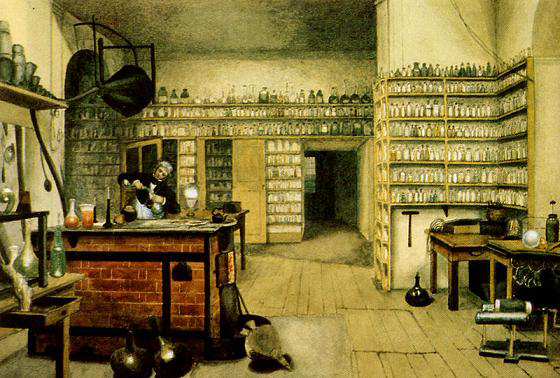Knowledge Base
Antenna Theory History
What is the origin of the antenna? I'm ruling out such early devices as compasses, because while they in some sense receive a magnetic field, it is not an electromagnetic field. Ben Franklin's kite experiment wasn't quite an antenna, as that captured lightning discharge, which is a direct current path where the energy is not transferred independent of the medium it travels. The human eye of course receives high frequency electromagnetic waves (light, to the layman). Technically the eye could be classified as an antenna; however since it can't transmit waves, it is really a sensor, so I'll exclude that as well.
The first experiments that involved the coupling of electricity and magnetism and showed a definitive relationship was that done by Faraday somewhere around the 1830s. He slid a magnetic around the coils of a wire attached to a galvanometer. In moving the magnet, he was in effect creating a time-varying magnetic field, which as a result (from Maxwell's Equations), must have had a time-varying electric field. The coil acted as a loop antenna and received the electromagnetic radiation, which was received (detected) by the galvanometer - the work of an antenna. Interestingly, the concept of electromagnetic waves had not even been thought up at this point.

Heinrich Hertz developed a wireless communication system in which he forced an electrical spark to occur in the gap of a dipole antenna. He used a loop antenna as a receiver, and observed a similar disturbance. This was 1886. By 1901, Marconi was sending information across the atlantic. For a transmit antenna, he used several vertical wires attached to the ground. Across the Atlantic Ocean, the receive antenna was a 200 meter wire held up by a kite.
In 1906, Columbia University had an Experimental Wireless Station where they used a transmitting aerial cage. This was a cage made up of wires and suspended in the air, resembling a cage.
A rough outline of some major antennas and their discovery/fabrication dates are listed:
Yagi-Uda Antenna, 1920s
Horn antennas, 1939. Interesting, the early antenna literature discussed waveguides as "hollow metal pipes".
Antenna Arrays, 1940s
Parabolic Reflectors, late 1940s, early 1950s? Just a guess.
Patch Antennas, 1970s.
PIFA, 1980s.
Current research on antennas involves metamaterials (materials that have engineered dielectric and magnetic constants, that can be simultaneously negative, allowing for interesting properties like a negative index of refraction). Other research focuses on making antennas smaller, particularly in communications for personal wireless communication devices (e.g. cell phones). A lot of work is being performed on numerical modeling of antennas, so that their properties can be predicted before they are built and tested.
Previous:Introduction to Antennas
Next:Antenna Fundamentals